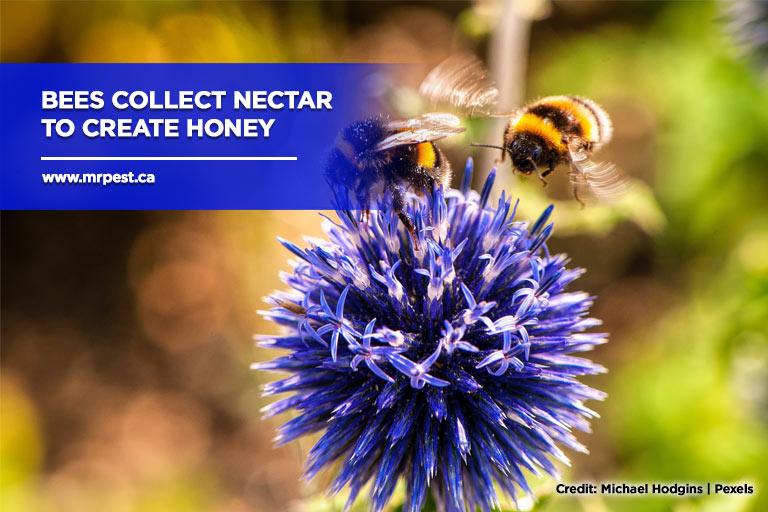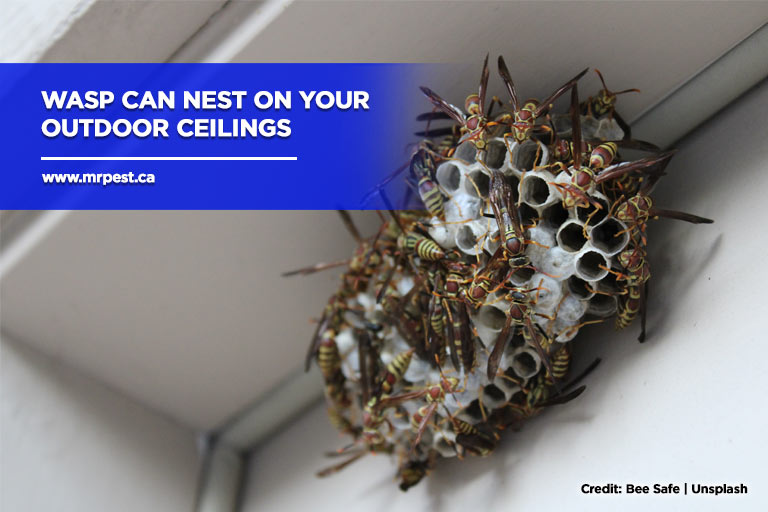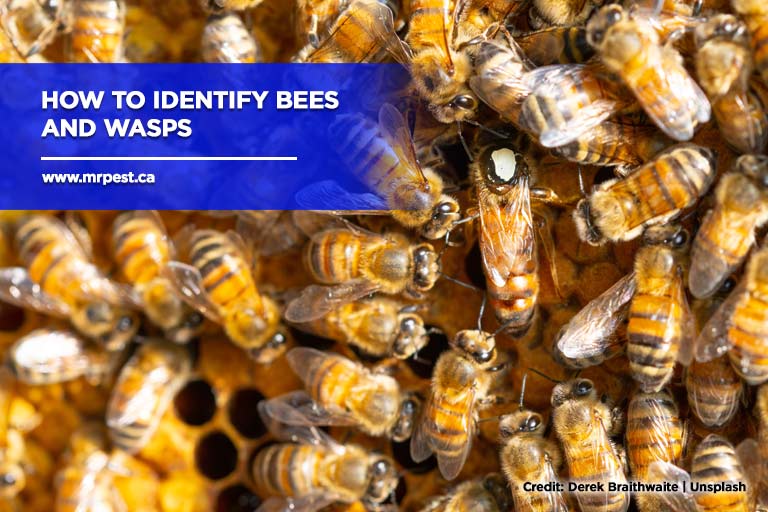When it comes to pest control, identifying the type of insect invading your space is crucial to combating the problem effectively. Bees and wasps can cause a stir, but many struggle to differentiate between the two. Understanding the key characteristics and behaviours of these insects is essential for proper identification and treatment.
So how do you tell the difference between bees and wasps? Here’s what you need to know about these stinging insects and how to handle each appropriately.
How to Tell a Bee From a Wasp
At first glance, bees and wasps may appear identical, especially since both have characteristic black and yellow stripes. However, upon closer inspection, you’ll notice various differences.
- Appearance
One of the most notable differences is their body shape: bees are typically rounder and fuzzier, while wasps have a more slender, smooth appearance.
Additionally, their colouration may differ slightly, with bees often having a darker yellow shade and a more pronounced contrast between their stripes.
Another distinguishing feature is their wings: bees’ wings are shorter and more rounded, while wasps have long, narrow wings positioned closer to their body.
- Habitats
Another key difference between bees and wasps lies in how they construct their homes. Bees are typically known for building intricate hives made from wax. These hives are often found in tree branches, hollows, or even within crevices.
On the other hand, most wasps build their nests by suspending them from tree branches, eaves, and overhangs. These nests are typically made of a papery material that the wasps create by chewing wood fibres or plant material.
- Behaviours
While bees and wasps may share a similar life cycle, bees are herbivores and rely heavily on pollen and nectar for sustenance.
When a queen bee lays eggs within the hive’s comb, a small amount of nectar is deposited next to each cell to serve food for the developing hatchlings. Bees have a social hierarchy within their colonies, with a queen bee leading the group and laying eggs and worker bees tending to the young and foraging for food.
In contrast, wasps are typically carnivorous and feed on other insects, spiders, caterpillars or grubs. Some species of wasps also feed on nectar, fruit, and sap, but most of their diet comprises protein-rich animal prey. Adult wasps typically hunt for food, capturing and paralyzing their prey before returning it to the nest to feed their young.
Types of Bees

- Honey Bees
Honeybees are remarkable insects that serve an important role in our ecosystem. As their name suggests, these bees feed on the nectar and pollen of flowers and plants, which they collect and transport back to their hives. The bees regurgitate the collected nectar and pollen, which is then transformed into honey through enzymatic digestion and evaporation. Honey bees store the resulting honey within their hives, using it as a source of energy and sustenance during times of scarcity.
- Bumblebees
Bumblebees, while similar in many ways to honey bees, these fuzzy insects are typically larger and have stubby wings. Bumblebees also exhibit a unique coloration that varies between species but often includes bright yellows, oranges, and blacks. They also use this nectar to create honey, although they are not as prolific honey producers as honey bees.
- Carpenter Bees
Carpenter bees are a unique species well known for their wood-destroying tendencies. While they may resemble bumblebees, the most notable difference is their shiny abdomens. These bees have a unique habit of boring holes in unfinished wood to lay their eggs. These holes are usually perfectly circular and can be up to half an inch in diameter. These holes can weaken the structural integrity of wooden structures, leading to potential safety hazards.
- Mason bees
Mason bees, also known as leafcutter bees, have a distinctive colouring, ranging from blue and black to the more common yellow and black. Unlike other bees constructing large hives or colonies, mason bees are solitary and build their nests inside existing cavities or holes in trees and other outdoor locations. They lay their eggs inside these nests and then seal them off with mud or other materials, creating a safe and protected environment for their offspring.
- Sweat bees
Sweat bees are a type of bee that are known for their metallic black or vibrant metallic green colouring. Unlike honey bees and bumblebees, sweat bees have a more slender and streamlined shape. This allows them to move quickly and easily through their environment, making them highly efficient pollinators. Sweat bees are attracted to the salt in human sweat and often land on people to try to collect it. While this can be a nuisance for some people, it is important to remember that sweat bees are not aggressive and are not likely to sting unless provoked.
Types of Wasps

- Wasps
Wasps, in particular, are easily recognizable by their narrow, streamlined bodies, which set them apart from bees’ rounder and plumper bodies. Unlike bees, which primarily focus on collecting pollen and nectar for their hives, wasps are known for their predatory behaviour. They hunt and feed on other insects, which can help to control populations of pests that damage crops and other vegetation.
However, it’s also important to note that wasps can be much more aggressive than bees and sting multiple times in a row. This can make them extremely dangerous to humans, especially those who may be allergic to their venom.
- Hornets
Hornets are social wasps easily recognized by their large size and distinct black-and-white or brown-and-yellow striped pattern. The European hornet is about an inch long with reddish-brown wings and a striped abdomen. Hornets are known for being more aggressive than other wasps and can be dangerous when their nests are disturbed. They have a powerful sting that can cause pain, swelling, and, in some cases, even severe allergic reactions.
- Yellowjackets
Yellowjackets are a common type of wasp easily distinguishable due to their distinctive black and yellow wasp striped appearance. They are typically smaller, usually around half an inch, and fly in groups, making them more noticeable. They are known to be super aggressive and will readily sting any perceived threat multiple times, which can cause significant pain and swelling in humans. A yellowjacket wasp nest is usually constructed underground or in a sheltered area such as a hollow tree and can house several thousand yellowjacket wasps.
Do you need bee or wasp control in your home or business? Don’t let these pests threaten your safety and peace of mind. Contact Mr. Pest Control today to get the help you need. Our experienced professionals can identify and safely remove these pests from your property. Don’t wait until it’s too late – contact us today at 705-739-7378 (Barrie), 705-326-3377 (Orillia), 705-739-7378 (Simcoe County), and 705-739-7378 (Midland & Area) to schedule your appointment and take back control of your space.



